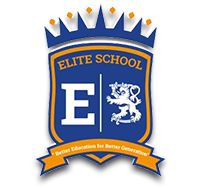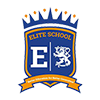Arts
I. Course description and aims
In MYP arts, students function as artists as well as learners of the arts. Artists have to be curious. By developing curiosity about themselves, others and the world, students become effective learners, inquirers and creative problem-solvers. Students create, perform and present arts in ways that engage and convey feelings, experiences and ideas. Through this practice, students acquire new skills and master those developed in prior learning.
Development in the arts is a dynamic process, and not necessarily linear. Students move freely through a creative process towards a deeper understanding of the arts. The process of creating artwork, as well as the product, demonstrates what students have experienced, learned and attempted to convey.
Arts in the MYP stimulate young imaginations, challenge perceptions, and develop creative and analytical skills. The course encourages students to understand the context and cultural histories of artworks, supporting the development of an inquiring and empathetic world view. Arts challenge and enrich personal identity and build awareness of the aesthetic in a real-world context.
MYP arts has four objectives of equal importance and value: knowing and understanding; developing skills; thinking creatively; responding. Although the objectives can be addressed separately to scaffold learning, collectively they enrich teaching and learning of the arts.
The aims of MYP arts are to encourage and enable students to:
- create and present art
- develop skills specific to the discipline
- engage in a process of creative exploration and (self-) discovery
- make purposeful connections between investigation and practice
- understand the relationship between art and its contexts
- respond to and reflect on art
- deepen their understanding of the world.
II. Curriculum overview
The MYP promotes sustained inquiry in arts by developing conceptual understanding within global contexts.
Key concepts such as aesthetics, change, communication and identity broadly frame the MYP curriculum.
Related concepts promote deeper learning grounded in specific disciplines. Examples of related concepts in MYP arts include interpretation, narrative, boundaries and innovation.
Students explore key and related concepts through MYP
Global Contexts.
- Identities and relationships
- Orientation in space and time
- Personal and cultural expression
- Scientific and technical innovation
- Globalization and sustainability
- Fairness and development
The MYP curriculum framework offers schools flexibility to determine engaging, relevant, challenging and significant content that meets local and national curriculum requirements. This inquiry-based curriculum explores factual, conceptual and debatable questions in the study of arts.
The MYP requires at least 50 hours of teaching time for each subject area in each year of the programme. For students participating in MYP eAssessment, the IB recommends 70 hours of guided learning each year in MYP years 4 and 5.
III. Assessment Criteria
Each arts objective corresponds to one of four equally weighted assessment criteria. Each criterion has eight possible achievement levels (1–8), divided into four bands with unique descriptors that teachers use to make judgments about students’ work.
Criterion A: Knowing and understanding
Students discover the aesthetics of art forms and are able to analyse and communicate using specialized language. Students inform their work and artistic perspective using explicit and tacit knowledge alongside an understanding of the role of the arts in a global context.
Criterion B: Developing skills
Students develop their artistic ideas to a point of realization by applying their skills. Students make fnal commitments to their artwork by presenting it to audiences.
Criterion C: Thinking creatively
Students develop curiosity, and purposefully explore and challenge boundaries. Students explore the unfamiliar and experiment in innovative ways to develop their artistic intentions, their processes and their work. They discover their personal signature and realize their artistic identity.
Criterion D: Responding
Students respond to their world, to their own art and to the art of others. Students must make connections and transfer learning to new settings. Through refecting on their artistic intention and the impact of their work on an audience and on themselves, students become more aware of their own artistic development and the role that arts play in their lives and in the world. Students learn that the arts may initiate as well as respond to change.

